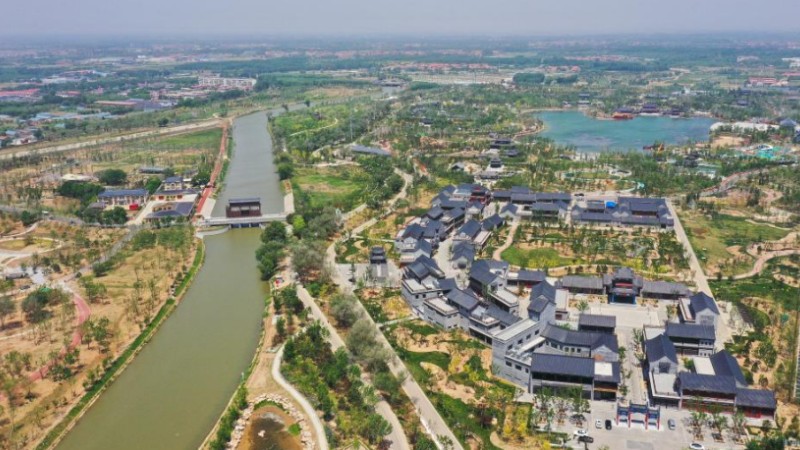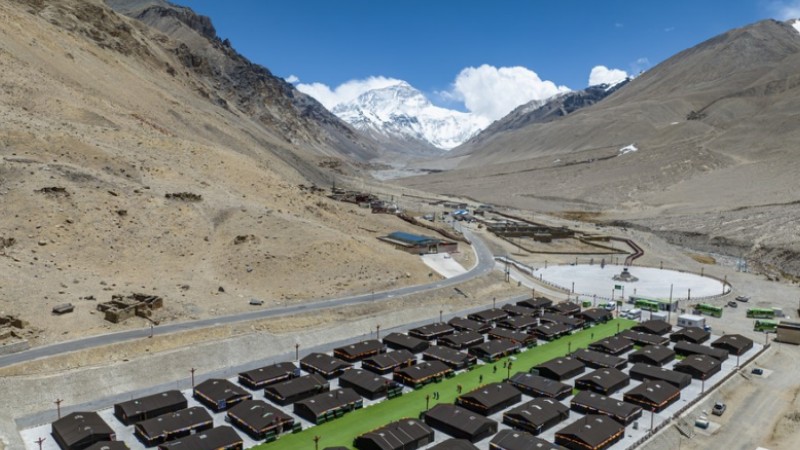Letter from Lhasa: Why climb the world's highest peak?
MOUNT QOMOLANGMA BASE CAMP, Tibet, May 24 (Xinhua) -- Chinese scientists have launched a new scientific expedition to Mount Qomolangma, with 13 members of the team reaching the world's highest peak at an altitude of 8,848.86 meters on Tuesday.
I was thrilled upon learning that I would be one of the journalists to cover the expedition.
However, as I got off the vehicle at the base camp of Mount Qomolangma, situated at an elevation of 5,200 meters, I was immediately struck by dizziness and shortness of breath -- unmistakable signs of mountain sickness. Even the mere act of taking a few steps demanded an extraordinary amount of energy.
At that moment, a profound question emerged within me: Why do people keep climbing Mount Qomolangma?
When asked this question, numerous climbers would instinctively invoke the famous response of British mountaineer George Mallory during a New York Times interview back in 1923: "Because it's there."
This year marks the 70th anniversary of man's first successful expedition to Mount Qomolangma, when New Zealander Edmund Hillary and Tenzing Norgay from Nepal scaled the summit from the south ridge on May 29, 1953. Since that groundbreaking expedition, numerous climbers have dared to measure the mountain's towering height with their own footsteps, occasionally putting their lives at stake in the process.
There are 18 routes for ascending Mount Qomolangma, among which the north slope route on the Chinese side stands as one of the two traditional paths. It was not until 1960 that a Chinese mountaineering team achieved the remarkable feat of reaching the summit via this route, decades after Mallory disappeared while attempting to conquer this very same path.
So what are you likely to experience when you try to reach the summit of Mount Qomolangma from the north slope?
During my stay at the Mount Qomolangma base camp, I talked with some climbers and guides. From these interactions, I have gathered a collection of insights that I eagerly wish to share with you.
May is typically a good time for climbers. The monsoon season comes after June, which brings continuous snow. While autumn tends to bring improved weather conditions, the accumulation of snow from previous snowfalls can present a formidable challenge, often resulting in over 2 meters of snow accumulation above the 7,000-meter mark. During the protracted winter season, the fierce winds that assail the mountain can effectively impede climbers from making any progress.
While the scientific analysis I was presented with appeared to be compelling, my personal experience at the base camp in May was not as comfortable as I imagined. I found myself freezing in the bone-chilling winds, particularly after the sunset. To stave off the bitter cold and prevent the penetrating wind from reaching me, I resorted to donning two layers of caps -- one crafted from wool and the other fashioned from my windproof outdoor jacket -- meticulously enveloping my head.
I was told that there are another five camps between the peak and the base camp. The starting point is at 5,200 meters for all climbing activities, with a multitude of formidable challenges strewn along the route.
Among them is the infamous North Col -- a sharp-edged pass carved by glaciers. The thick wall of ice and snow once discouraged Western explorers in the late 19th and early 20th centuries. The height of several hundred meters, the near-vertical angle, and the dense ice crevasses require climbers to be skilled in ice climbing and, in some cases, use ladders to get through.
Another major difficulty is the fearsome winds after leaving the camp at 7,028 meters. Climbers without protective ropes can be blown off the ridge sometimes.
Then, at an altitude of 8,600 meters, climbers encounter the third major challenge on the route: the "second step." It is an almost vertical wall several meters high and extremely difficult to find support points for climbing. The earliest Western challengers asserted that no one could get past the "second step."
In 1960, Liu Lianman, a member of the Chinese mountaineering team, was willing to be a "ladder," letting his teammates step on his shoulders to cross the "second step."
When I heard Liu's story, my mind couldn't help but conjure a vivid image of him, already fatigued and depleted, summoning every ounce of strength to uplift his teammates, a sight so moving that it brought tears to my eyes. Though his name did not appear on the roster of those who reached the summit, Liu is undoubtedly a true hero.
Lost in contemplation, my mind abruptly recalled an interview I had conducted merely a couple of weeks ago with Dong Hongjuan, the first woman to conquer all authentic summits of the 14 mountains towering above 8,000 meters, as recognized by the international mountaineering website 8000ers.com.
During our conversation, Dong, who truly understands how small and fragile humans are compared to nature, uttered a profound statement that resonated deeply within me: "I never felt I conquered those mountains; it's just that the mountains accepted me."
Photos
Related Stories
- Mt. Qomolangma expedition 2023 to upgrade meteorological observation level
- 70 years after man's 1st summit, Chinese expedition makes way to world's highest peak
- Maintenance work of world's highest weather station completed
- Letter from Lhasa: An odyssey to Mount Qomolangma base camp
- Chinese expedition reaches world's highest peak for scientific research
Copyright © 2023 People's Daily Online. All Rights Reserved.









